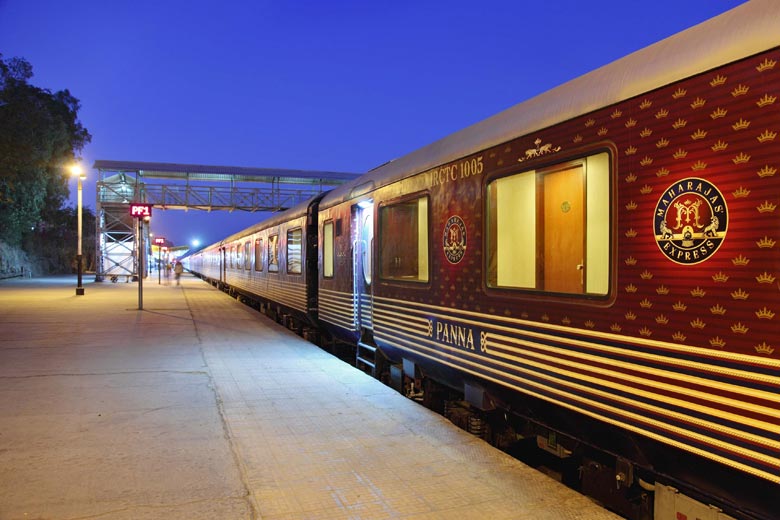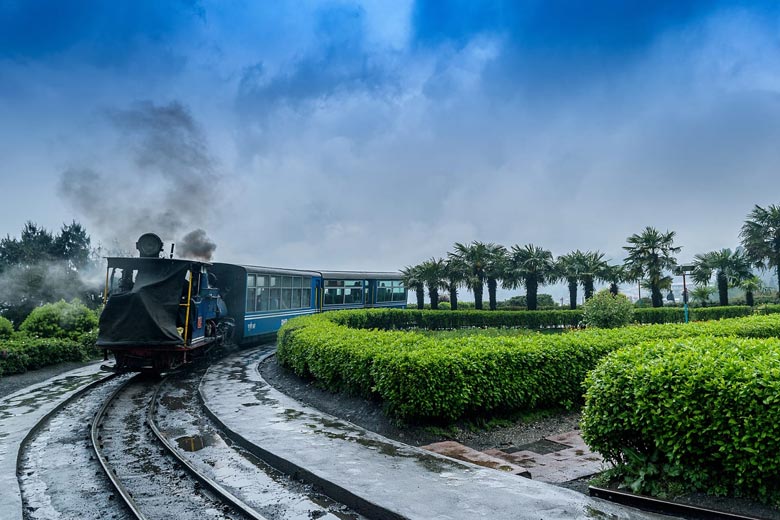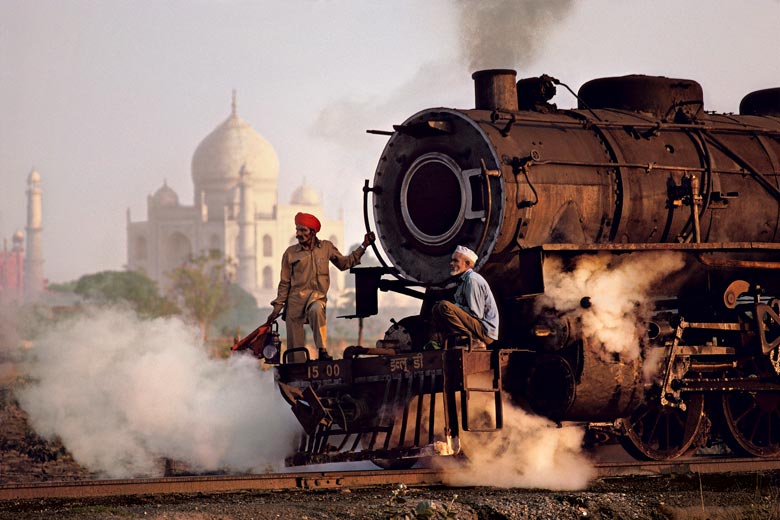Information on Indian Railways, Reservation
For a true taste of India, its people and landscape, nothing beats travelling by train on one of the most comprehensive networks in the world Indian Railways is a huge state-run conglomerate, the world’s largest employer. It moves 10 million passengers a day yet still remains remarkably efficient and uniquely poetic. There is no better way to get the pulse of South Asia than to view the changing scene from a carriage window. Incidentally, a window comprises several layers to keep out the sun, dust and ticket less travelers.
British colonialists laid most of the 62,000 km (38,525 miles) of track, and left sturdy Victorian relics — clocks, scales, and benches —on platforms across India.
Being government-run, the logic of transport is often ignored in favour of political mileage. Thus the fast trunk inter-city services known as Rajdhani (to various state capitals from Delhi) are apt to be slowed down by demands for intermediate halts to suit local members of parliament. In the 1990s, the overnight switch of political power from North India to the constituencies of the South resulted in the conversion of meter gauge to broad gauge, a decision that had been considered unrealistic under North Indian prime ministers.
Yet in spite of political interference the working of the railways is impressive. Serving under the Rail Minister is the Railway Board whose chairman is invariably a railway engineer. The system is divided into nine zones, which derive IR part from the reach of the imperial private companies. For example, today’s Central Railway has inherited the extent and style of the Great Indian Peninsular lines. Zonal profiles vary considerably with the southern states profitably in command of their assets (borne out by the smart livery of both rolling stock and rail-waymen), while those in the north and east wilt under the burden of saturation.
Reservation and ticketing are now computerized at most stations.
Luxury Train Services

Luxury Train Services in India
Services on specialty trains such as the Palace on Wheels through Rajasthan is unrivalled, with two turbaned valets for each carriage. For the luxury of service, if not for speed and fittings, the first class air-conditioned compartments of Indian Railways are as good as any in the world. When you compare what the railways give you for about the comparable price of a plane ticket with all the delays and charmlessness of airports, then body and soul travels more meaningfully by train. Following a relaxed journey, you arrive in the middle of town. Budget travellers can also go by second class in an air-conditioned or three-tier air-conditioned sleeper coach so that the heat and dust is filtered out.
Services on specialty trains such as the Palace on Wheels through Rajasthan is unrivalled, with two turbaned valets for each carriage. For the luxury of service, if not for speed and fittings, the first class air-conditioned compartments of Indian Railways are as good as any in the world. When you compare what the railways give you for about the comparable price of a plane ticket with all the delays and charmlessness of airports, then body and soul travels more meaningfully by train. Following a relaxed journey, you arrive in the middle of town. Budget travellers can also go by second class in an air-conditioned or three-tier air-conditioned sleeper coach so that the heat and dust is filtered out.
The age of steam

Darjeeling Trian
Steam locomotives are officially on the scrap heap. (Rumour had it that the constant pilfering of coal was a major factor in the fate of steam.) Luckily, one famous route has been reprieved, that of the line to Ootacamund in the Nilgiris. The famous line up to Darjeeling in the Himalayas has recently been converted to diesel traction. India has two of the oldest locomotives in the world still at work. Tweed and Mersey get up steam (1873 vintage) each winter on private industrial lines to cart sugar cane on the metre gauge east of Gorakhpur in Uttar Pradesh.
Steam traction can still be glimpsed along forgotten branch lines, usually in areas where respectable citizens rarely tread. For example, in the North East zone parallel to the Uttar Pradesh and Bihar border with Nepal you may find the standard workhorses of the metre gauge, the UP and YG class of engines, hauling local passenger trains. Do not make the mistake of enquiring at Indian Railways headquarters at Rail Bhavan in New Delhi about the existence of these overlooked steamers. Nostalgia has no place here and steam is frowned upon as a sign of backwardness.
Prime lines
Not all progress is forward. Until 1994 the traveller could cover the entire subcontinent by one gauge, but since then the metric has been sacrificed to a broader option that does not (nor probably ever will) have such extensive coverage. However from Ledo in Assam you can still tool along parallel to the Himalayas to Jhaj in Gujarat, a 4,000-km (2,490-mile) journey that takes anything up to five days. The contrast in scenery is sensational, with the lush rhino tracks of the Brahmaputra giving way to the rice paddies of West Bengal, and the wheat fields of Uttar Pradesh. Rajasthan brings the desert sands that stretch to the Rann of Kutch home to the galloping wild ass.The coasts on both sides of the subcontinent offer some fine scenery but the Coromandel leading to Chennai is more impressive. With the new length of Konkan Railway from Mumbai to Mangalore, a fabulous stretch of coastal scenery has opened up. Probably the most sensational coastal run of all is to Rameshvaram, on the isle of Pamban. Formerly this line ran another 20 km (12 miles) along a narrow spit of sand to Danushkodi, but the entire line was obliterated by a storm in 1965.
Inland, the hill railways of India are famous for their character and quaintness. Not far from Mumbai is the climb to Matheran by tiny narrow gauge stock. Darjeeling’s toy railway is well known. Ooty’s also is widely loved but contrary to popular notions about its “rack” (which only runs as far as Coonoor) this is not a narrow gauge railway but metric. Whereas the Darjeeling engines were Scottish, those that push up the Ooty train are Swiss with an extra set of pistons to work the rack mechanism.
While the hill line to Simla is famous for its 103 tunnels, a better view of the Himalayan peaks can be had from its sister narrow gauge line that runs through the Kangra Valley.
For the mechanically minded the world’s highest broad gauge track is notable for the triple-headed trains that carry iron ore for export from Kirinul to the port of Visakhapatnam in Andhra Pradesh, a modern engineering triumph of Indian expertise. A daily mixed train from Vizag runs up this line and over the Eastern Ghats to the Adivasi capital of Bastar. Other impressive crossings, this time of the Western Ghats, are from Tenkasi to Quilon and the newer and more dramatic alignment from Mangalore to Hassan. Yet another memorable ghat line is over the Aravalli range from Jodhpur to Udaipur in Rajasthan, past craggy forests and the highest point on the Western Railway.
How to book Train Tickets in India?
Swan Tours can assist in designing itineraries for destinations connected by Railways, negotiating best rates with Luxury trains such as Palace on Wheels or hiring an entire coach / train for your proposed itinerary.
For further information on Indian Railways, contact Swan Tours at www.swantour.com – One of the leading travel agents in India.

